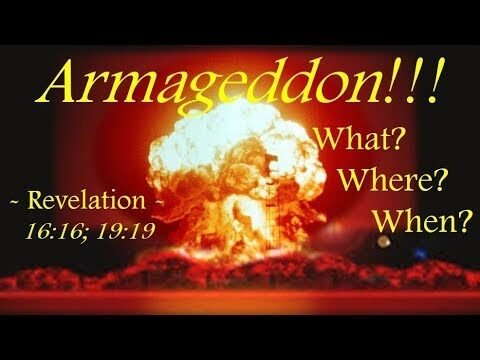Understanding Gog in the Bible: Insights and Interpretations
The concept of Gog, as depicted in the Bible, has long intrigued scholars and theologians alike, representing a symbol of opposition and conflict in eschatological narratives. Found primarily in the prophetic texts of Ezekiel, Gog is often associated with a future adversary that challenges the faithful, sparking discussions about the end times and divine intervention. This exploration of Gog not only reflects humanity’s enduring fascination with prophecy and destiny but also invites deeper reflection on the moral and spiritual lessons embedded within these ancient scriptures.
What does Gog signify in the Bible?
In biblical texts, Gog represents a significant figure associated with the ultimate confrontation between good and evil. Specifically mentioned in the Book of Ezekiel, Gog is depicted as a formidable ruler from the land of Magog, symbolizing the antagonistic forces that challenge God’s people. This portrayal emphasizes the themes of divine judgment and the ultimate triumph of righteousness over malevolence.
The narrative surrounding Gog and Magog extends into the Book of Revelation, where they are transformed into representations of nations led by the forces of darkness. Here, they embody the collective opposition to God, revealing a cosmic struggle that transcends individual characters and reflects a broader spiritual battle. This shift in interpretation highlights the enduring nature of these figures as symbols of chaos and rebellion against divine authority.
Ultimately, the biblical meaning of Gog serves as a reminder of the prophetic warnings about the end times and the moral imperative to remain steadfast in faith. The imagery of Gog and Magog encapsulates the tension between divine sovereignty and human defiance, inviting reflection on the consequences of turning away from God’s guidance. As such, these figures continue to resonate within theological discussions about eschatology and the nature of evil.
In the Bible, where is Gog located?
In biblical texts, Gog is often associated with the land of Magog, which some scholars suggest could be a reference to Babylon. This relationship implies that “Gog and Magog” may serve as a concise term for the figure Gog and the territory he represents, reflecting their interconnectedness in ancient narratives. The terminology gained further prominence through the Septuagint, the Greek translation of the Hebrew Bible, where the phrases were used to encapsulate the broader themes of conflict and prophecy tied to these enigmatic figures.
Who is Gog in the Bible?
In biblical interpretations, Gog is often associated with prophetic narratives that foretell the ultimate confrontation between good and evil. Joachim of Fiore, a prominent theologian from the 12th century, emphasized Gog’s role as the “Final Antichrist.” He posited that this figure would emerge just before the Last Judgment, signifying a climactic struggle that would shape the destiny of humanity.
Joachim’s vision suggests that Gog’s arrival will follow the defeat of an earlier antichrist, ushering in a time of millennial peace. This sequence of events paints a dramatic picture of spiritual warfare and redemption, where Gog serves as a pivotal character in the unfolding of divine prophecy. His interpretations continue to influence contemporary understandings of eschatology, highlighting the enduring significance of Gog in biblical discussions today.
Unraveling the Mystery of Gog’s Role in Scripture
Throughout the pages of Scripture, the enigmatic figure of Gog emerges as a symbol of impending conflict and divine judgment. Often associated with apocalyptic prophecies, Gog represents the chaotic forces that challenge God’s sovereignty and threaten His people. In various biblical texts, particularly in Ezekiel, Gog’s narrative intertwines with themes of restoration and hope, suggesting that even in turmoil, there lies the promise of redemption. This duality invites deeper exploration of Gog’s role, prompting believers to reflect on the broader implications of faith, resilience, and the ultimate triumph of good over evil in the face of adversity.
Biblical Perspectives: Who is Gog?
In biblical texts, Gog is often depicted as a symbol of opposition against God’s people, primarily mentioned in the prophetic books of Ezekiel and Revelation. Ezekiel portrays Gog as the leader of a powerful nation that comes from the land of Magog, representing a formidable enemy that threatens Israel. This imagery serves as a stark reminder of the ongoing struggles between good and evil, and the ultimate victory of divine justice over chaos and rebellion.
The identity of Gog has sparked various interpretations throughout history, with scholars debating whether he represents a specific historical figure, a future antagonist, or a metaphor for larger cosmic battles. Some view Gog as a representation of nations that oppose God’s chosen people, while others suggest he symbolizes the spiritual forces that seek to undermine faith and righteousness. This multifaceted portrayal invites readers to reflect on the nature of evil and the assurance of God’s protection in times of turmoil.
Ultimately, the figure of Gog transcends a singular identity, serving as a catalyst for discussions about prophecy, morality, and the end times. By exploring the themes surrounding Gog, believers are encouraged to remain vigilant and faithful, trusting in God’s sovereignty amid the challenges they face. The narrative invites a deeper understanding of hope and resilience, reminding us that even in the face of great adversity, divine purpose prevails.
Theological Insights: Gog’s Significance in Prophecy
Gog, often depicted as a formidable adversary in biblical prophecy, represents more than just a geopolitical foe; he embodies the ultimate challenge to the divine order and the faithful. Theologically, Gog’s role in eschatological narratives serves as a catalyst for God’s intervention, illustrating the struggle between good and evil. This figure, emerging from the land of Magog, symbolizes the chaotic forces that threaten peace and righteousness, prompting believers to reassess their faith and commitment in the face of adversity. Ultimately, Gog’s significance lies in his function as a harbinger of redemption, reminding us that through trials, divine purpose unfolds, leading to the restoration of order and the fulfillment of God’s promises.
Exploring Interpretations: Gog Through the Ages
Throughout history, the figure of Gog has been interpreted in diverse ways, reflecting the cultural and theological contexts of each era. In ancient texts, Gog was often depicted as a formidable enemy, symbolizing chaos and the ultimate challenge to divine order. As societies evolved, so too did the representations of Gog, transforming from a literal adversary to a metaphorical embodiment of societal fears and existential threats. This evolution illustrates how Gog serves not only as a figure of prophecy but also as a mirror reflecting the moral and ethical dilemmas faced by humanity at various points in time. Each interpretation enriches our understanding of Gog, inviting deeper exploration of the human condition and the perpetual struggle between good and evil.
The concept of Gog in the Bible serves as a powerful reminder of the ongoing struggle between good and evil, urging readers to reflect on their own beliefs and the moral choices they make. This ancient narrative not only resonates with contemporary challenges but also encourages a deeper exploration of faith, prophecy, and the human condition. Embracing these lessons can inspire hope and resilience, guiding individuals through the complexities of modern life.






